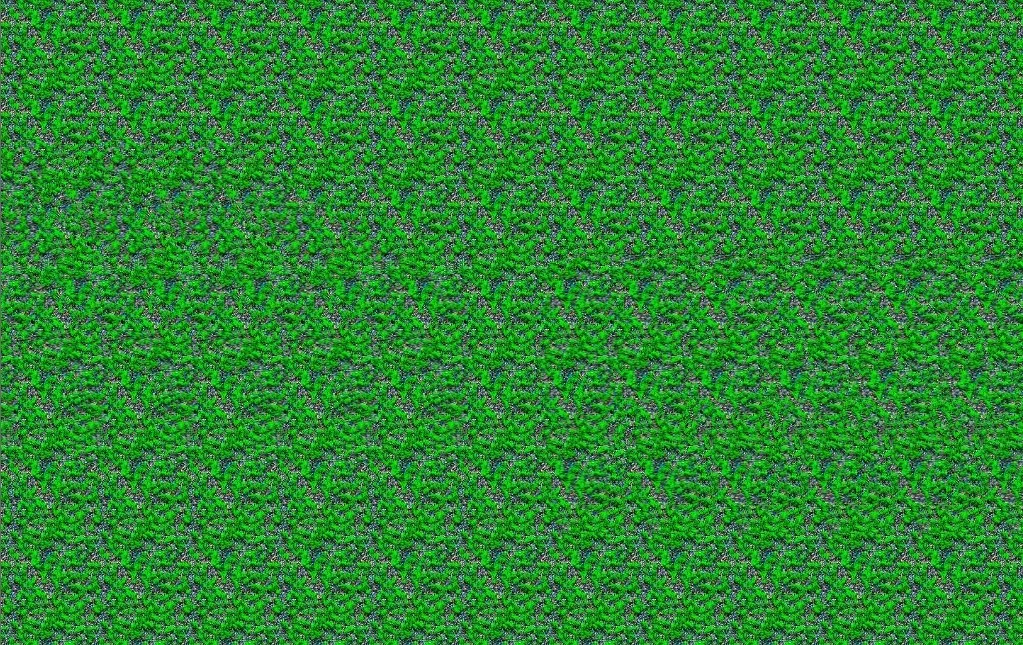Magic Eye: Illusion, or Delusion?

Dear Editor,
Seeing the Magic Eye illusion (AKA autostereogram) in the May 31st issue of the Tech brought back a lot of fun memories! In my youth, my dad had a book full of these illusions, and they were a lot of fun to decipher. In fact, a framed poster of an autostereogram hangs on the wall at home! I must admit, deciphering the Tech’s magic eye was a bit of a challenge since most of the strategies I use rely on a somewhat reflective surface. But after about 30(!) minutes, I was able to see it, and now it just takes me a couple of seconds to find it again. Thank you for the fun optical challenge.


Last issue’s magic eye puzzle and solution
I was eager to share my excitement with friends, but to my dismay, I could not find anyone else who could see the hidden image. Fortunately however, this gave me the opportunity to teach people how to see the illusion. I was eager to share the mind-blowing experience I had when I saw my first autostereogram. Over several days, I coached my friends in Dabney Hovse on how to control their eyesight, and unlock the magic eye’s secret. But my mission was ill-fated. My determination and enthusiasm that initially helped me view the magic eye became my adversaries when they became perceived as deceit. To everyone who could not see the illusion, it suddenly became easy to believe that the published image in The Tech was nothing more than a hoax. To compensate, I grew adamant of the existence of the hidden illusion, but this only strengthened suspicions. “Y’all are lying, it’s a prank, stop lying” exclaimed Kelsie Taylor (Ph ‘23, Dabney), after spending a respectable amount of time trying to see the illusion. As much as it disappoints me, I must admit her stance is justified. Let’s be real: how on Earth could any image be developed from a random field of black and white pixels? But this is exactly what makes autostereograms so remarkable! The disbelief makes finally seeing the image all the more rewarding, so Kelsie is due for a huge payoff. Other individuals have more nuanced stances on the situation. As stated by Noah Ortiz (Ma ‘23, Dabney):
It is my belief that, whilst “autostereograms” (colloquially “magic eye illusions”) do actually exist and bring pleasure to tens of Americans every year, the so-branded image published in The California Tech on 31 May 2023 is, in fact, not an autostereogram.
Rather, it is just a rectangular region filled with random static printed by dubious folks affiliated with the newspaper. Zero individuals have provided me verifiable proof that the image actually contains a “creature”. It is my suspicion that those responsible, namely Michael “Guutz” Gutierrez (image author) and Kai “Kaironium” Svenson (promulgator), seek to “gas light” the “Caltech” population. In my opinion, taking psychological advantage of a notoriously gullible and anxious community shows a lack of empathy or misaligned motives, which calls into question the newspaper’s journalist integrity.
Editor, it saddens me that such an unique and perplexing feature in the Tech has been received so poorly solely on the basis of ignorance and tin foil hat theories! To credit Noah however, the autostereogram published in the Tech on May 30th is particularly difficult to see. As Lynn Feng (’26, Marble) commented, “despite being able to see the shape easily, I had trouble identifying what it was from depth.” Though I may be unable to directly provide the proof Noah seeks, I can do the next best thing and share my tips on how to view autostereograms. You can practice on the autostereogram I’ve included in this letter!
- Be in a room with plenty of ambient light. This makes it easier for you to control how you focus your eyes. Autostereograms can also be viewed from a computer monitor, and this might be easier than trying to view them from a printed copy of the Tech.
- Hold the autostereogram right up to your nose. Focus your eyes on something behind the paper and far away. This is the most important tip I think. An autostereogram is not a literal hidden image, like a Where’s Waldo puzzle. Your eyes need to be focused beyond the paper. If you’re viewing an autostereogram on a glossy or reflective material, focus on your reflection. If your clothing has words on it, try reading them in your reflection.
- Keeping your eyes focused behind the paper, slowly move the autostereogram away from you. Moving your head back also works if you’re using a computer monitor. You don’t have to move the paper far, just until you can view the full image.
- During or after moving the autostereogram away, try slightly converging or diverging the lines of sight of your eyes.
- It will be exceedingly obvious when you’ve found the image. It should appear 3D and holographic. I promise that after seeing the image the first time, you’ll find it quite easy to find again.
See the Wikipedia page on Autostereograms for more technical tips, and an explanation of how they work. I highly recommend checking out more autostereograms online as they appear in a wide variety of formats, and can have very intricate and detailed patterns.
I hope some readers find the joy in autostereograms as I have. Happy hunting!
-Kai Svenson